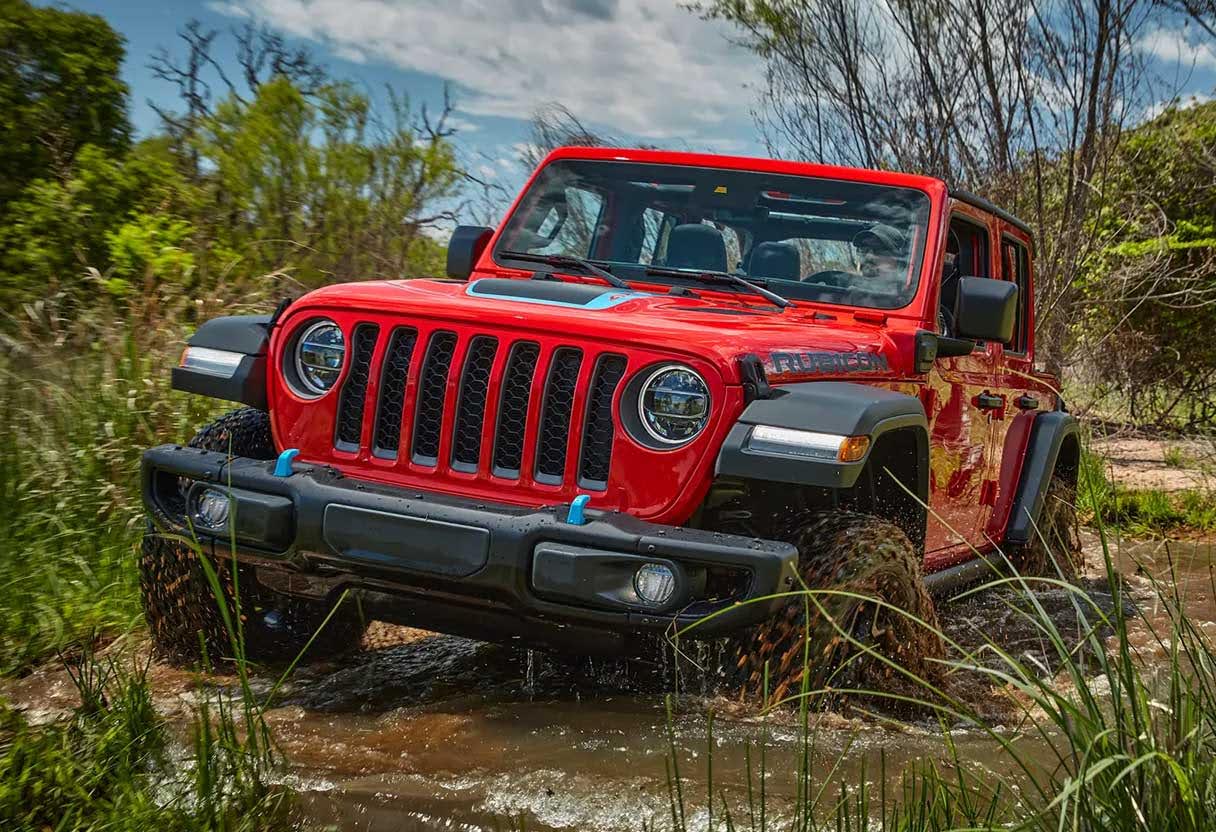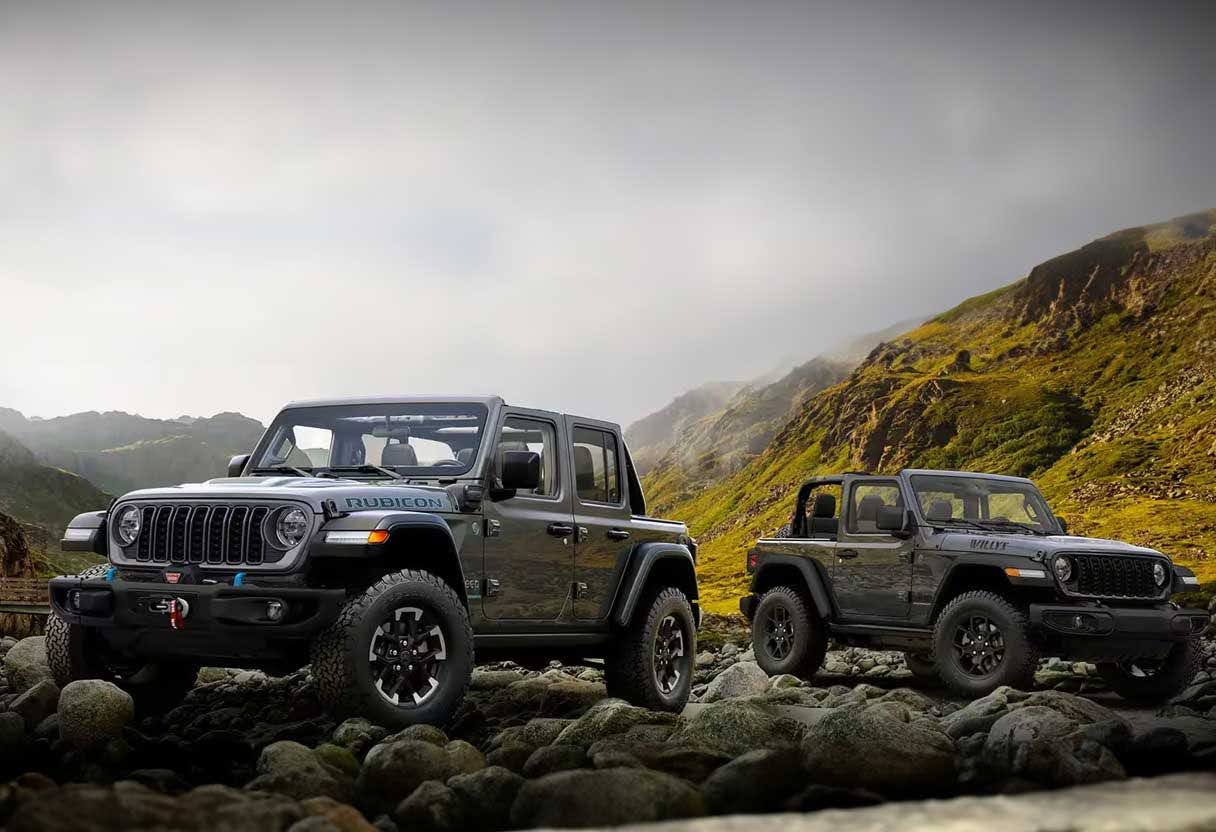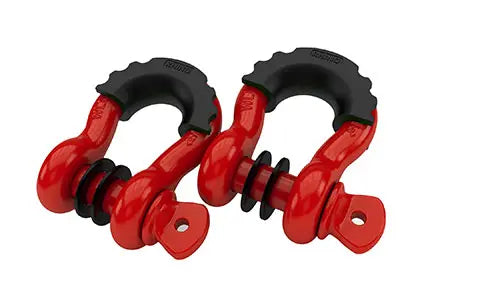
Jeep Wrangler vs Sahara: A Comparative Analysis
The Jeep Wrangler is an iconic off-road vehicle that has been defining the 4x4 segment for years. With its roots deeply embedded in adventurous terrains and rugged landscapes, it offers a lineup that caters to different driving preferences and lifestyles.
Among its various models, the Wrangler Sport and Sahara trims are particularly noteworthy. Each presents a unique blend of features, performance, and styling that appeal to distinct audiences.

The Wrangler Sport serves as the entry-level model, often recognized for its closer ties to the original Jeep design philosophy of simplicity and utility. This makes it not just the most accessible in terms of price but also a favorite among enthusiasts looking to customize their rides.
In contrast, the Sahara trim is positioned as a more upscale and feature-rich variant. It is designed to deliver a balance between the rough-and-tumble off-road prowess the Wrangler is known for and the comfort and technology that modern drivers increasingly demand.
Understanding the key differences between the Wrangler Sport and Sahara models involves examining their specifications, performance capabilities, and the suite of features each offers.
This comparison will highlight what sets these trims apart, helping prospective buyers make an informed decision that aligns with their priorities, be it the utilitarian charm of the Sport or the enhanced comfort and style of the Sahara.
Jeep Wrangler Overview

The Jeep Wrangler is an iconic off-road vehicle renowned for its versatility and capability. In this section, we will explore its historic journey and the base features that define the Wrangler.
Historical Evolution of Wrangler
The Jeep Wrangler has a storied history that dates back to World War II when its predecessors were an integral part of the military's mobility.
Over the years, Jeep has carefully refined the Wrangler, enhancing its abilities while preserving the rugged charm that has made it a beloved fixture in the off-roading community. The most recent generation, known as the JL, represents the culmination of decades of engineering and design evolution.
Base Features of Jeep Wrangler
Even at its most basic trim level, the Jeep Wrangler stands out with its robust set of features.
The entry-level Wrangler Sport, for instance, boasts a 3.6-liter Pentastar V-6 engine, capable of delivering 285 horsepower and 260 lb/ft of torque. This is complemented by a six-speed manual transmission, illustrating the vehicle's commitment to a hands-on driving experience.
In addition to its mechanical prowess, the Wrangler also comes with standard features such as:
- Touchscreen stereo system
- Air conditioning unit
- Skid plates and tow hooks for off-road protection
- Command-Trac Part-Time 4WD System
The combination of these features ensures that even the most basic Wrangler model keeps its promise of adventure and resilience.
Jeep Sahara Overview

The Jeep Sahara serves as a balance between luxury and capability within the Wrangler lineup, offering a blend of urban comfort and off-road proficiency.
Historical Evolution of Sahara
The Jeep Sahara has evolved over the years, consistently upgrading its features while maintaining its iconic status.
It began as part of the Wrangler lineage and has seen various iterations, each refining the vehicle's comfort and technology while catering to the demands of both on-road and off-road enthusiasts.
Base Features of Jeep Sahara
Engine:
- 2.0L Turbo Inline-4 Gas
- Optional 3.0L Turbo Diesel
Drivetrain:
- Four-wheel drive system standard
Interior Features:
- Upgraded upholstery
- Infotainment system with touchscreen
Exterior Features:
- Body-color fender flares
- Optional hard-top or soft-top configurations
The Sahara's focus is a luxury-oriented experience that doesn't compromise on the Wrangler's storied off-road heritage. This makes it an exemplary choice for those who seek comfort without forgoing adventure.
Comparative Analysis

This section provides a detailed comparison between the Jeep Wrangler and Sahara models, focusing on design, performance, technology, and value.
Design and Aesthetics
The Jeep Wrangler is recognized for its traditional and rugged design, staying true to its original styling. It typically features a more utilitarian look with fewer aesthetic embellishments.
In contrast, the Jeep Wrangler Sahara offers a more upscale appearance, often coming with additional styling cues such as body-colored fender flares and a polished grille that cater to drivers looking for a balance between form and function.
Performance and Off-road Capabilities
When it comes to performance, both vehicles come equipped with the legendary Jeep four-wheel drive system.
However, the Wrangler Rubicon is designed with superior off-road capabilities in mind. It boasts the NV241OR Rock-Trac transfer case with a 4:1 low-gear ratio, providing an impressive crawl ratio that is invaluable on challenging terrain.
The Sahara, while still very capable, is tuned more towards comfort and is better suited for those who do the occasional off-road adventure but spend most of their time on paved surfaces.
Wrangler Rubicon vs Sahara (4WD System):
|
Feature |
Wrangler Rubicon |
Sahara |
|
Transfer Case |
NV241OR Rock-Trac |
Command-Trac/NV241 (varies) |
|
Low-Gear Ratio |
4.0:1 |
Lower than Rubicon |
|
Crawl Ratio |
70.3 when shifted into 4-Lo |
Lower than Rubicon |
|
Sway Bar |
Electronic disconnecting |
Standard (non-disconnecting) |
Interior and Technology
The Sahara model often features more advanced technology and a refined interior compared to the base Wrangler models.
This could include a larger infotainment screen, better audio systems, and additional comfort features like automatic climate control. The Wrangler will typically have a more basic and functional interior that reflects its utilitarian roots.
Price and Value
Pricing between the models can vary significantly.
The Wrangler Sport, being the more bare-bones option, will generally be the most affordable, providing a solid base for customization.
The Sahara, on the other hand, sits at a higher price point due to its additional features and improved aesthetics. Buyers should consider their intended use and desired features to determine the best value for their investment.
Conclusion

When choosing between the Jeep Wrangler Sport, Sahara, and Rubicon, buyers must consider their driving needs and preferences.
The Wrangler Sport, positioned as the base model, offers a balance of price and capability for those who need a reliable and robust vehicle capable of occasional off-roading.
Jeep Wrangler Sahara is tailored for drivers seeking a blend of comfort and off-road performance. It stands out with its stylish body, additional technological features, and larger 18-inch wheels, yet retains a lower suspension setup compared to the Rubicon.
Jeep Wrangler Rubicon, designed for the off-road enthusiast, boasts superior capability with its heavy-duty axles, 4:1 transfer case ratio for rock crawling, and higher ground clearance. It commands a higher price due to its specialized equipment designed for challenging terrains.
|
Feature |
Sport |
Sahara |
Rubicon |
|
Suspension |
Standard |
Lower |
Raised |
|
Wheel Size |
Smaller |
18-inch |
Larger |
|
Off-road Readiness |
Moderate |
Balanced |
Enhanced |
|
Technology and Comfort |
Basic |
Upgraded |
Comprehensive |
|
Price |
More Affordable |
Middle Range |
Highest |
In summary, for day-to-day driving with moderate off-road capabilities, the Sport or Sahara would be satisfactory, whereas the Rubicon is the go-to for dedicated off-road adventures.
Each model offers a worthy package to its segment, ensuring that there's a Wrangler to fit various lifestyles and terrain challenges.
- Choosing a selection results in a full page refresh.








